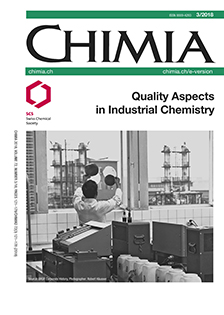Synthesis of Advanced Mesoporous Materials by Partial Pseudomorphic Transformation
FH-HES Universities of Applied Sciences
DOI:
https://doi.org/10.2533/chimia.2017.158Keywords:
Bottleneck pores, Mesoporous silica, Pseudomorphic transformation, Silica gelAbstract
The structure of porous silica particles can be reorganized without alteration of the particle size and shape by the process of pseudomorphic transformation. Partial pseudomorphic transformation leads to ordered mesoporous silica with bimodal pore size distributions and bottleneck pores. Compared to the classical pathways of mesoporous silica synthesis, pseudomorphic transformation implies less compromise between pore structure and particle shape, while enabling the preparation of complex pore architectures.Downloads
Published
2018-03-30
Issue
Section
Columns, Conference Reports
Categories
License
Copyright (c) 2018 Swiss Chemical Society

This work is licensed under a Creative Commons Attribution-NonCommercial 4.0 International License.
How to Cite
[1]
M. J. Reber, N. Zucchetto, D. Brühwiler, Chimia 2018, 72, 158, DOI: 10.2533/chimia.2017.158.







